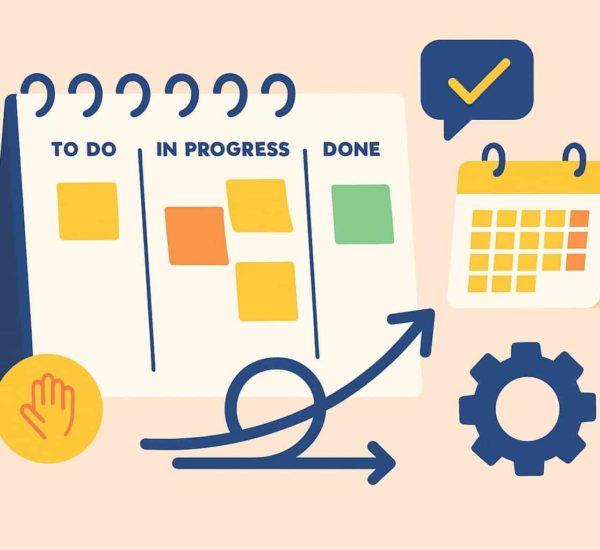In the world of human resources, efficiency and consistency are crucial. That’s where Standard Operating Procedures (SOPs) come in. An SOP for HR is a detailed document that outlines step-by-step processes for handling tasks like recruitment, onboarding, and performance tracking. Whether you’re a seasoned HR professional or new to the field, understanding and writing an SOP and implementing it, can significantly improve workflows and reduce errors.
In this blog, we’ll explore topics like:
- What SOP stands for and its significance in HR.
- How to write an SOP that aligns with your organizational goals.
- The scope of SOP in recruitment and broader HR functions.
- Practical examples of an SOP for hiring processes and job roles.
By the end, you’ll have a clear roadmap to write SOPs that boost efficiency and enhance compliance in your workplace. Let’s dive in!

What Is an SOP, and What Does It Stand For?
An SOP, or Standard Operating Procedure, is more than a basic set of instructions. It’s a comprehensive guide that defines who is responsible for a task, how the task aligns with organizational objectives, and the desired outcome once the task is completed.
The primary purpose of an SOP is to promote consistency and efficiency in both routine and specialized processes. These documents ensure that employees follow standardized procedures, achieving uniform results every time. An SOP can take various forms, such as a checklist, a step-by-step guide, or a visual flowchart, depending on the complexity of the task.
A well-designed SOP not only boosts employee confidence by providing clear directions but also minimizes errors by offering structured guidance. To make these instructions accessible to everyone, organizations often store SOPs in policy manuals or digital systems. A designated team or administrator is typically responsible for maintaining and updating these procedures to ensure they remain relevant and effective.
Why Are Standard Operating Procedures (SOPs) Essential?
Standard Operating Procedures (SOPs) play a critical role in streamlining business operations, particularly for complex or recurring tasks that involve multiple steps. Beyond ensuring efficiency, SOPs safeguard both companies and employees by minimizing risks to quality assurance, safety, data security, and legal compliance. Here are some key reasons why SOPs are indispensable for organizations:
Enhancing Workflow
SOPs are designed by thoroughly testing and refining processes to determine the most effective way to accomplish a task. These detailed instructions provide clear guidance, eliminating guesswork and enabling employees to complete tasks more efficiently. With a reliable SOP, workflows become smoother, boosting overall productivity and opening opportunities for innovation and profit growth.
Ensuring Consistent Quality
By offering clear, standardized instructions, SOPs remove ambiguity from tasks, ensuring consistent results regardless of who executes them. This level of uniformity improves the quality of work and helps maintain the company’s standards across all operations.
Empowering Employees
Having SOPs in place allows employees to work more independently. With clear directions at their disposal, they can handle tasks confidently without frequent managerial intervention. This autonomy not only empowers employees but also frees up leaders to focus on strategic priorities.
Preserving Knowledge and Expertise
SOPs act as a centralized repository of knowledge, enabling employees to share information and collaborate effectively. They help prevent gatekeeping, where critical knowledge is confined to specific individuals. In cases of employee transitions, such as department changes, extended leave, or retirement, well-documented SOPs ensure business continuity without disruption.
Minimizing Risks and Ensuring Compliance
Documented SOPs help organizations meet industry regulations by eliminating uncertainties in processes and demonstrating compliance with standards. This can significantly reduce liability risks and simplify audits, making accountability and adherence to regulations easier to manage.
Step-by-Step Guide to Writing an Effective SOP
Creating a Standard Operating Procedure (SOP) involves careful planning, collaboration, and clear documentation. Here’s a step-by-step process to help you write an SOP that is practical, easy to follow, and tailored to your organization’s needs:
Step 1: Define the Purpose
Start by identifying the specific process or task the SOP will address. Clarify why the SOP is necessary and how it aligns with your organization’s goals. Ask yourself what problem this SOP solves, who will use it, and what outcomes are expected.
Step 2: Assemble the Team
Involve key stakeholders, such as team members who perform the task regularly, managers, and subject matter experts (SMEs). Their insights will ensure the SOP is accurate and practical.
Step 3: Outline the Scope
Clearly define the boundaries of the SOP. Specify the tasks it covers and doesn’t cover, the roles and responsibilities of those involved, and any prerequisites or resources needed to complete the process.
Step 4: Choose the SOP Format
Select a format that best suits the task’s complexity and audience. Common formats include step-by-step instructions for straightforward processes, hierarchical steps for tasks with sub-steps or branches, and flowcharts for processes with decision points or multiple pathways.
Break the task into detailed steps to ensure clarity and completeness. For each step, use clear, concise language, and include relevant details such as timelines, tools, or safety precautions. Enhance readability with numbered lists, bullet points, or diagrams.
Step 6: Include Supporting Details
Enhance the SOP with additional information, such as expected outcomes, key contacts for assistance, and references to related policies, regulations, or documents.
Step 7: Test the SOP
Before finalizing, test the SOP with a small group of employees who will use it. Observe them as they follow the instructions to identify gaps, ambiguities, or potential improvements.
Step 8: Revise and Refine
Incorporate feedback from the test phase to ensure the SOP is effective and user-friendly. Focus on simplifying complex instructions, correcting inconsistencies, and adding missing details.
Step 9: Publish and Distribute
Save the finalized SOP in an easily accessible location, such as your company’s intranet or a shared drive. Using a document management system can further streamline access, version control, and permissions across teams. Notify employees about the new or updated SOP, and provide training if necessary.
Step 10: Establish a Review Schedule
SOPs require regular updates to stay relevant. Set a review timeline (e.g., annually or biannually) and assign a person or team to evaluate its effectiveness and make necessary adjustments.
Example Template for an SOP
- Title: Clearly describe the process (e.g., “Onboarding New Hires”).
- Purpose: Explain why the SOP exists and its objectives.
- Scope: Outline what the SOP covers and any limitations.
- Roles and Responsibilities: Define who does what.
- Procedure: Provide step-by-step instructions or flowcharts.
- Supporting Documents: List references, tools, or related policies.
- Review and Updates: Include the review schedule and point of contact for updates.
By following these steps, you’ll create an SOP that empowers your team to perform tasks confidently and consistently. Let me know if you’d like an example for a specific process!

What Are the Potential Drawbacks of SOPs?
While Standard Operating Procedures (SOPs) offer significant advantages, they’re not always a perfect fit for every process in your business. Some tasks benefit from a degree of flexibility or creativity that rigid guidelines might inhibit. Before implementing SOPs across the board, it’s important to weigh their potential drawbacks and develop strategies to address them. Here are some common challenges associated with SOPs:
1. Difficulty in Implementation and Enforcement
An SOP is only effective if your team consistently follows it. However, getting employees and managers to adopt a new SOP can be challenging. Resistance to change, lack of understanding, or a perception that SOPs are overly restrictive can hinder compliance. Without buy-in from all stakeholders, even the most well-crafted SOP will fall short of its intended purpose.
Solution: Involve employees in the creation process to ensure the SOPs address real challenges and feel practical to those using them. Regular training and clear communication about the benefits of SOPs can also foster better compliance.
2. Time-Intensive Employee Training
Introducing SOPs often requires significant effort to train employees on when and how to use them. The process becomes even more labor-intensive if there are frequent updates or if your workforce has a high turnover rate. Employees may also need additional support during the transition phase to integrate the new procedures into their daily routines.
Solution: Develop user-friendly training materials, such as quick-reference guides or video tutorials, to simplify learning. Offering hands-on workshops or assigning mentors can also help employees gain confidence in using SOPs effectively.
3. Regular Maintenance and Updates
SOPs are not a “set-it-and-forget-it” solution. They require periodic reviews to ensure they remain relevant, reflect current best practices, and align with any changes in regulations, technology, or business goals. Neglecting this step can render your SOPs outdated and ineffective.
Solution: Assign a dedicated team or individual to monitor and update SOPs regularly. Establish a schedule for reviews and incorporate feedback from employees to keep the procedures practical and up-to-date.
4. Communication Challenges During Updates
When SOPs are updated, all affected employees must be informed promptly and clearly. Poor communication can lead to confusion, inconsistent practices, and mistakes. This challenge is particularly pronounced in larger organizations with multiple teams and locations.
Solution: Implement a robust communication plan for SOP updates, including emails, team meetings, and training sessions. Use digital platforms to share updates and track acknowledgment to ensure no one is left out
5. Readability and Accessibility Issues
The effectiveness of an SOP depends on how well it is written. If the document is overly complex, lengthy, or filled with jargon, employees may struggle to follow it correctly. This can result in procedural errors and diminished trust in the SOP’s usefulness.
Solution: Focus on clarity and simplicity when writing SOPs. Use concise language, bullet points, and visuals like flowcharts or diagrams to make the instructions easy to understand. Test the SOP with a small group of employees before rollout to identify areas for improvement.
Final Thoughts on How to Write an SOP
While writing an SOP can transform your business processes by promoting consistency and efficiency, it’s crucial to acknowledge and address their limitations. By proactively tackling challenges like enforcement, training, and communication, you can ensure that your SOPs remain an invaluable tool for achieving operational excellence.



